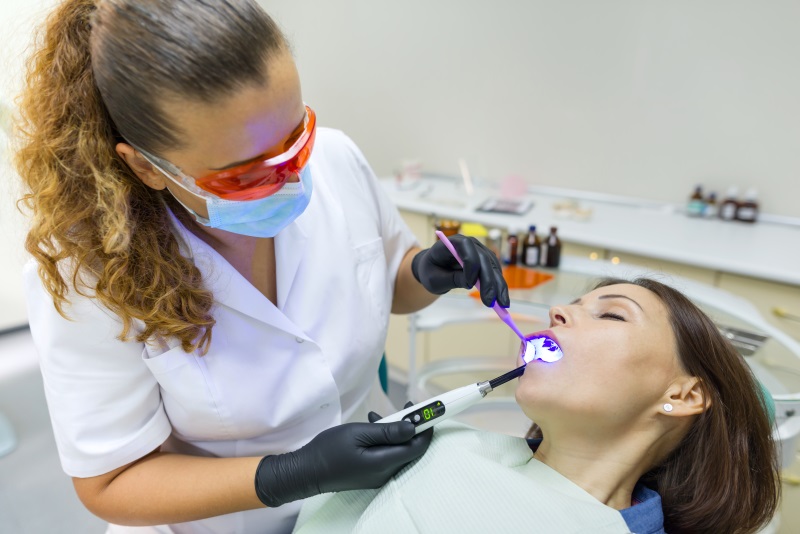You already know what cavities are, and probably knew that cavities—or tooth decay—is caused by bacteria. The great majority of us have had at least one dental restoration (the process you undergo to remove and replace a part of a tooth damaged by decay). It’s an almost universal experience.
There have been studies which have linked oral decay and an increased risk of respiratory infections, bloodstream infections, heart issues, diabetes, pregnancy complications, osteoporosis and arthritis. And while it’s unlikely—or, at least, still unproven—that tooth decay has any causal relationship with these diseases, the lifestyle factors which create the former are also risk-factors for developing the latter.
With this information in mind, getting your regular dental check-ups twice per year can also be a larger “health check” to step back and evaluate your lifestyle choices, and watch out for factors that can lead to other problems.
Signs of gum disease
When your gums are healthy, their color is that of a light pink, not unlike raw salmon. When their color is a darker red, this could be a sign of higher blood circulation and inflammation. Swelling and bleeding are the first obvious signs of gum disease. You might also notice your gums become smaller, as they recede and leave your teeth unprotected. Receding gums also correlate with teeth becoming more prone to decay. If you only notice bleeding occur during or after brushing, start by switching to a softer toothbrush or changing the way you brush. If these small changes eliminate the bleeding, you might not have developed full-blown gum disease yet, but probably have sensitivities you need to discuss with your dentist.
On the other hand, when bleeding is frequent and lasts for several minutes, it’s possible you might need treatment for chronic inflammation of your gums. Swelling should be treated as soon as possible, because your oral health will be more susceptible to bacteria, disease and decay if your gums aren’t healthy.
Infection can permeate your dental tissues all the way up to the top of the root, and cut through deeper teeth tissues as well. This is why it’s important not to procrastinate fixing tooth decay; restoring teeth while the decay is accessible gives you the best shot at blocking further spread of disease.
How to prevent the spread of infectious gum disease
Gum disease can be genetic, meaning the infection will activate again and again. If you have these genetic predispositions, it’s important to undergo regular professional cleanings, at least once every six months. Regular cleanings aren’t just about keeping your teeth clean, after all—they’re also about keeping track of your gums. Gum disease can lead to other serious maladies—oral and other—including oral cysts, heart disease, trouble controlling blood sugar, and even premature delivery among pregnant women, according to the National Institute of Dental and Craniofacial Research.
Oral disease as an indicator of other problems
In addition to the health of your teeth and gums, dental checkups monitor the condition of your tongue, saliva and breath. Bleeding wounds and other oral problems are mostly benign and can easily be remedied, but some of these irregularities can be an indicator of other diseases. Just as oral disease can lead to illness elsewhere by weakening your immune system, other illnesses can also manifest themselves through diseases in your mouth. For example, kidney failure and liver disease can show symptoms of bad breath, due to imbalances of enzymes in proper digestion.
Your body is connected system-by-system, and it’s natural that symptoms of a disease might show in unexpected places. By caring for your teeth and treating oral disease, your dentist might also indirectly help you detect other problems, and advise you to consult with the appropriate specialist or general practitioner. Start with regular cleanings, and you’ll be on your way to more proactive action toward your greater health.
The post Dental referrals to other specialists: How your mouth can show symptoms of non-oral disease appeared first on Fort Worth Dentist | 7th Street District | H. Peter Ku, D.D.S. PA.

No comments:
Post a Comment